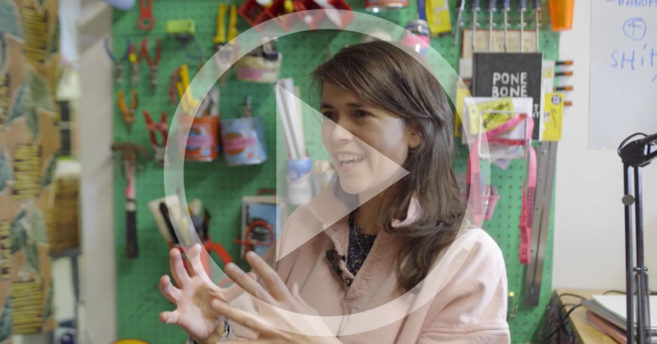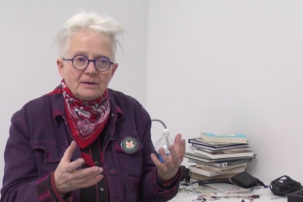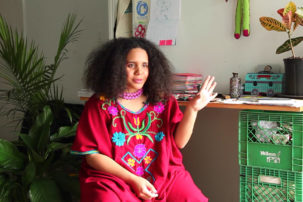In the Studio with Patrick Cruz by Brittany Shepherd from Canadian Art.
On my way to Patrick Cruz’s Toronto home studio, I walked past two shattered mirrors. That’s twice as many shattered mirrors as I’d ever encountered in my life at that point, so there’s no way it meant nothing. Yahoo Answers told me it could foreshadow seven years of bad luck, or “it just means that you have to buy a new one,” or that since mirrors bridge a link between two worlds, “a broken mirror may symbolize an inability to transcend the passage between the two.”
Negotiating two worlds fittingly turned out to be one of the main topics of discussion with Philippines-born, Toronto-based painter and installation artist Patrick Cruz, who completed his MFA at the University of Guelph in 2015 and won the RBC Canadian Painting Competition later that year. His family moved to Vancouver when he was 18, and Cruz says he couldn’t recognize—let alone distill—the organized chaos of his home until he lived in its absence, under Vancouver’s grey skies.
For Cruz, amalgamating disparate source images and techniques is similar to the way hybrid identity is constructed by often impermeable layers. Maximalism—through colour, layering, quantity, excess—came to be a way for him to reconcile that void, since, as he told me, “Once you feel displaced, you feel like you’ve lost a limb, or something.”
“Maximalism is not in the canon of Western art,” he adds. “I work fast and try not to overthink. My process is very intuitive. I like it to be free, like freestyling. Whatever’s around, I just grab it and cobble it together. For me, sampling is a way of problematizing [art] history.”
Cruz paints in acrylic—“It’s a marginalized medium: it’s cheap, it’s plastic, it’s disposable”—based on his collections of screenshots of images that are jarring or politically loaded or funny, or all of the above. Then he wraps the interior of the gallery space with panels upon panels of them in his disorienting, site-specific installations.
“Ever since my experience has shifted culturally, the site has been an important place to mine meaning, because when you get displaced, you deal with space, you deal with places, houses, homes, notions of shelter,” Cruz says. “The gallery is a site to negotiate this.”
Spending three months in clown school taught him strategies that helped him transgress the rigid confines of art school. The Pochinko school—a Montreal-rooted style of Canadian clowning that synthesizes European miming, American red-nose clowning and Indigenous clowning—encouraged play and releasing inhibition in a critique-free class environment. “I’m not saying clowning is for everyone, but I’d definitely recommend it,” Cruz says. “Being a clown is very political.”
In this studio-visit video by Brittany Shepherd, Cruz shares some of the strategies he learned in clown school and the vitality of intuition in his practice.—Merray Gerges, staff writer








